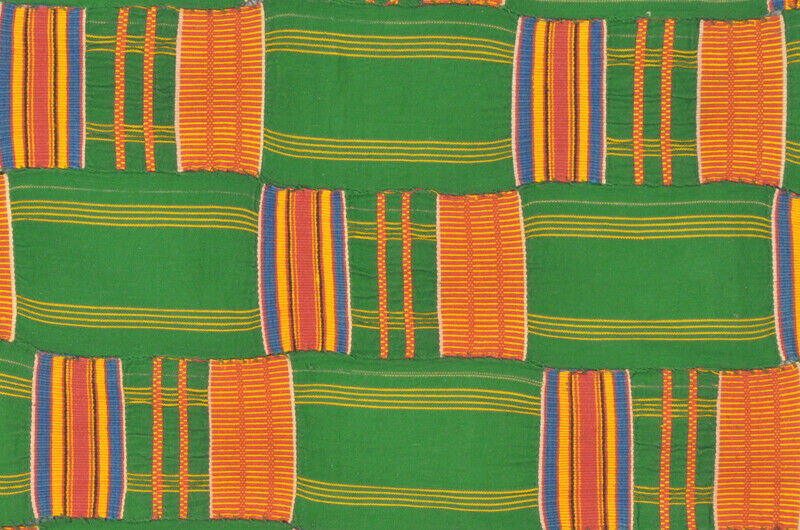Tribalgh
Handwoven Ewe Kente – 1960s Ghana Volta Woman‑Size Cloth 71"x53"
Handwoven Ewe Kente – 1960s Ghana Volta Woman‑Size Cloth 71"x53"
Item number:
SKU:SD-31198
Check shipping cost
Check shipping cost
FREE DHL shipping ( 2 - 4 working days ) to all over the world.
We combine shipping on multiple purchases!
Couldn't load pickup availability
Vintage 1960s Handwoven Ewe Kente Cloth – Woman Size 71"×53"
This authentic Handwoven Ewe Kente cloth dates back to the 1960s, meticulously woven by skilled artisans in Ghana’s Volta Region. A true piece of African textile artistry!
- Size: 71"×53" (180 cm × 134 cm) – “Woman size” cloth
- Era: Vintage – 1960s
- Condition: Very good – minor wear consistent with age & gentle use
Featuring elegant square‑block weft float motifs across its surface, this ceremonial Ghana Ewe Kente embodies both aesthetic beauty and cultural resonance. Its sturdy yet refined feel makes it ideal as a garment, wall hanging, or decorative runner.
Historical & Cultural Context
What is Ewe Kente? Originating in Ghana’s Volta Region, Ewe Kente is a ceremonial cloth hand‑woven on a horizontal treadle loom. Multiple narrow strips are woven, then sewn together to form the full cloth.
Weaving process & symbols: Creating a cloth like this took several weeks to months, depending on complexity. Square‑block weft floats, common in Ewe designs, symbolize order, unity, and community. Animal or geometric motifs may convey proverbs, historical tales, ethical lessons, or spiritual beliefs.
Materials & usage: Traditionally woven from cotton and sometimes blended with silk or fine fibres, Ewe Kente was worn during special ceremonies or festivals. Today it’s cherished by collectors and used as a wall hanging, sofa or bed covering crossing the line into fine art.
Ewe vs Ashanti Kente: While both hail from Ghana, Ewe kente typically features a tighter, more linear layout with square‑oriented motifs and a restrained colour palette. Ashanti kente often displays bolder colours and more pictorial symbolism. Ewe cloths are usually narrower but used in multiples, producing a different visual rhythm.
History of Kente: The tradition dates to the 17th century among Ewe weavers, evolving into a symbol of unity, prestige, and cultural heritage. Over centuries, it has become synonymous with Ghanaian royal and ceremonial life an enduring testament to skill, history, and identity.
A real piece of authentic African art own a slice of West African history!
Share






